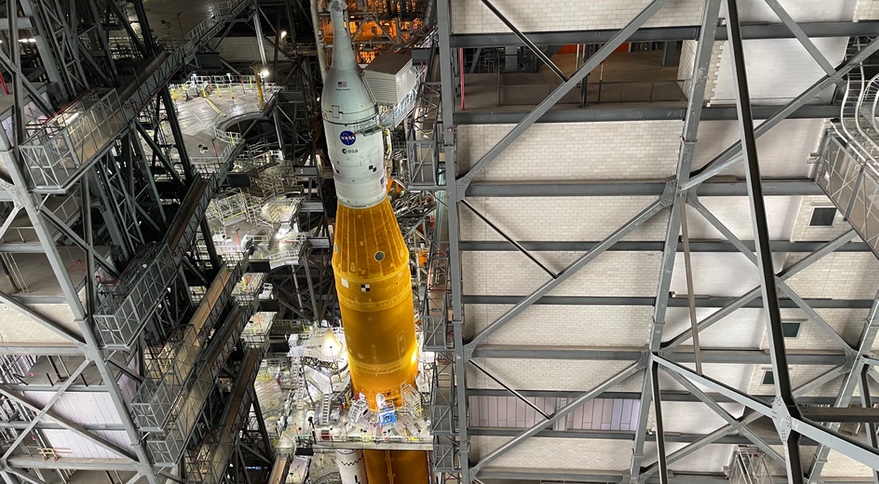
WASHINGTON — NASA and the U.S. Space Force have resolved an issue with the flight termination system on the Space Launch System that could have cut short the vehicle’s inaugural launch campaign.
In an update late Aug. 12, NASA said it worked with Space Launch Delta 45, the Space Force unit that operates the Eastern Range, to extend the certification of the flight termination system (FTS) on the rocket from 20 to 25 days. That extension will be valid for all attempts for the upcoming Artemis 1 mission.
NASA officials previously said the 20-day limit on the FTS, after which the unit would need to be retested, restricted the launch opportunities for the mission. The Eastern Range requires the FTS to be tested 15 days before launch, starting a 20-day clock to conduct the launch. That would have allowed launches to take place on Aug. 29 and Sept. 2, but not a third opportunity Sept. 5.
“The clock starts during processing in the VAB,” or Vehicle Assembly Building, said Judd Frieling, NASA Artemis 1 ascent/entry flight director, during a briefing Aug. 5 at the Johnson Space Center. Specifically, that period starts when the batteries for the FTS are installed and charged.
Those batteries, he said, were previously certified for only 20 days. “They are in talks with the Eastern Range to extend that certification to a little bit longer than 20 days, hopefully to bring in a third attempt, but those negotiations are still in work.”
With the extension of the FTS certification to 25 days, NASA could proceed with a Sept. 5 launch opportunity if needed. That is the last launch opportunity before the current launch period, driven by operational requirements such as a daytime splashdown of the Orion spacecraft at the end of the mission, ends Sept. 6.
The FTS, designed to destroy the vehicle if it veers off course after launch, is located in an area of the core stage accessible only in the VAB and not at the pad. If Artemis 1 does not launch by Sept. 5, it would have to roll back to the VAB to recertify the FTS. Cliff Lanham, senior vehicle operations manager for NASA’s Exploration Ground Systems program, said in a July briefing that it would be a “real challenge” to complete that work and roll the vehicle back out in time for a launch during the next launch period, which opens Sept. 20 and runs through Oct. 4.
With the extension of the FTS certification, NASA is moving into the final steps of vehicle preparations inside the VAB before rolling the vehicle back to Launch Complex 39B. That rollout is scheduled to begin shortly after midnight Eastern Aug. 18.
Related
ncG1vNJzZmiroJawprrEsKpnm5%2BifK%2Bt0ppkrKiRmLJuss6rmp5loprAsLjVnmSspKNis621xqGrZqyVp7qqusCtoKimXajGtMDEpmSiq6OqsnA%3D